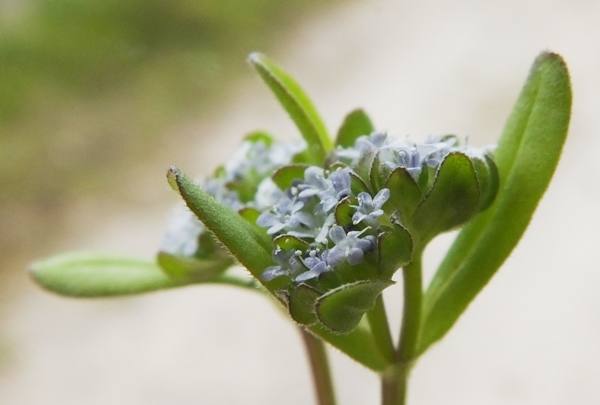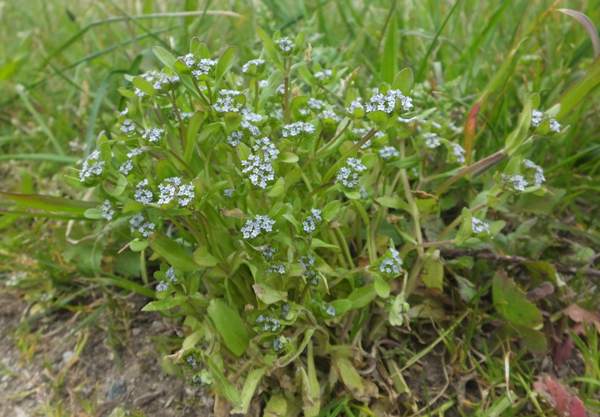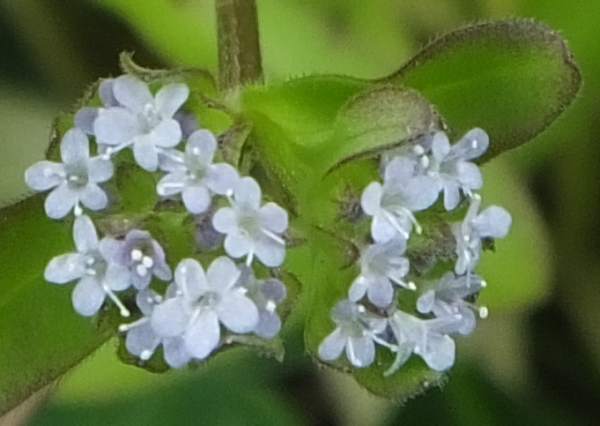Valeriana locusta - Common Cornsalad
Phylum: Magnoliophyta - Class: Equisetopsida - Order: Dipsacales - Family: Caprifoliaceae

The flower heads may look rather like umbellifers, but Common Cornsalad (also referred to as Corn Salad or Lamb's Lettuce) is more closely related to the Teasel than to Wild Carrot, Hogweed and the other umbellifers (family Apiaceae). Some botanists refer to this plant by its synonymous scientific name Valerianella locusta.
Description
Valeriana locusta can grow up to 30cm tall, producing clusters of very pale blue five-petalled flowers, the petals joined at the base to form a trumpet-like corolla. Common Cornsalad flowers are a mere 1.5 to 2mm across and typically 2mm long; they each have three white stamens.

An upright annual plant, Common cornsalad spreads via stolons (underground runners) as well as by means of seeds.

The branching stems carry opposite leaves.The lower leaves are stalked and spatulate, while upper leaves are oval and stalkless.
Distribution
This plant is found throughout Britain and Ireland as well as most of mainland Europe, North Africa and western Asia.
Habitat
Common Cornsalad favours rocky dry and sandy soils such as coastal dunes and shingle banks as well as railway tracks and other disturbed ground inland.
Blooming Times
In Britain and Ireland Common Cornsalad blooms from April until the end of June.
Uses
Sleeping potions known as Valerian were derived from this plant; they were used not only as a treatment for insomnia but also reputedly by thieves who spiked the drinks of intended victims. Valerian is still used as the source of sedatives for relaxing the central nervous system.
Etymology
The generic botanical name Valeriana comes from the Latin verb valere, meaning 'to be healthy' while the specific epithet locusta means means 'growing in an confined area,' which may refer to the flowers being crowded together (like locusts?).
The common name reflects the historic occurrence of this plant in cornfields (by which I mean fields of oats, wheat, barley, rye etc).
Uses
High in vitamin C, Common Cornsald has long been grown as a salad crop.
Similar Species
The diminutive Common Cornsalad is easily distinguished from its much taller and more robust close relatives Marsh Valerian Valeriana dioica and Common Valerian Valeriana officinalis.